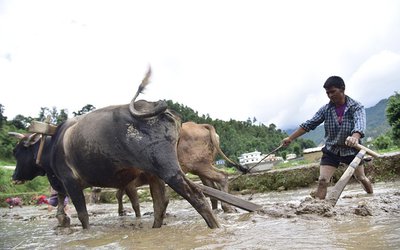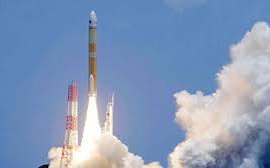More on National






Nepal is having to deal with a great water shortage. Because of global warming, the Himalayas and glaciers are melting and the water problem is getting more critical every day.
Kathmandu demands 200 million liters of water daily. The government reports to the World Water Organization show that the authorities are able to supply only about 160 million liters of the precious liquid daily. Compounding with this is the lack of unsafe drinking water, which is leading to many diseases. The Department of Water Supply and Sanitation (DWSS) estimates that 15000 children die each year due to diarrheal diseases ‘caused’ by poor environmental sanitation and lack of access to quality water supply.
Unsafe drinking water can also lead to arsenic mitigation. Arsenic is a silent killer, because the health effects of arsenic poisoning are generally delayed by drinking the arsenic (As) rich water over a long period of five to twenty years. It leads to skin problems, cancer, diabetes, high blood pressure and reproductive disorders, especially harmful for the fetus of pregnant women. More alarming, it is not only found in water but also in rice, and Nepali people eat dal bhaat at least twice a day.
“The presence of arsenic in water is strangely enough very natural,” said Nam Raj from the World Health Organization (WHO) of Nepal. “Natural arsenic salts are present in all water but usually only in very small amounts. Most of the water in the world has natural arsenic concentrations of less than 0.01 mg/liter.”
Arsenic was first tested and detected in tube wells in 2000. Still, no evidence can confirm how or when arsenic occurred in ground water of Nepal. It must be from natural sources. It is found in all Terai districts of Nepal. In some districts, the level exceeds the maximum concentration of 50 ppb (part per billion). Arsenic is mostly found in shallow tube wells. Occurrence of arsenic in deep tube wells is very rare but it does exist, according to authorities.
So far, no significant arsenic concentration is found in places other than the Terai in Nepal. A probe conducted during 2006-2008 tested all tube wells of the 20 Terai districts. Out of the 1.2 million tested tubes, about 1.7 % of those were contaminated with arsenic above the acceptable level of 50 ppb. The DWSS notes that the concentration was found to be dangerously high in districts, namely, Rupandehi, Nawalparasi, Rautahat, Bara and Parsa. The reason why only the Terai is badly affected by arsenic remains uncertain.
A decade later, it was estimated by the government, that about 2.7 million people in Nepal are drinking water with arsenic concentrations above the recommended international threshold of 10 ppb.
“Arsenic poisoning can be prevented in different ways,” said Nam Raj. ”There are three ways of preventing people from using arsenic contaminated water. The first is to provide an arsenic filter with an individual hand pump.”
The Nepali NGO’s: ENPHO and RWSSSP developed, together with a team of researchers at Massachusetts Institute of Technology (MIT), a low-cost biosand water filter at household level. It filters water from arsenic and other contaminants. “Theoretically, filters of any kind bring the arsenic level below acceptable level (50 ppb) also even up to 10 ppb. But it depends on how people do the operation,” he warns.
Families in Nepal distributed more than 900 filters in the Nawalparasi District, one of the worst affected areas in Nepal. The filter lasts for 12 years and is easy to use and maintain.
“A second way of prevention is to provide alternative source of drinking water and third is to develop a community wide water supply system with safer sources. In Nepal more that 60% of contaminated hand pump systems have an installation with a filter. Recently the government is planning for an alternative and more permanent system of water supply. Use of dug wells, installing hand pumps in different locations where there is no arsenic and development of small community system are the feasible system.”
People understand the existence of arsenic in their drinking water and all the tube wells are marked for the presence or absence of arsenic. Nevertheless, many people still use the contaminated water: “They do not have an alternative and use the water partly because they are not very serious about the possible consequences. When cases of arsenicosis will be significant and people are infected with it, it will be too late for them. This is the time to take it seriously.”
The WHO was initiated arsenic testing in some districts of eastern Nepal more than a decade ago. Later DWSS, UNICEF and UN Habitat completed blanket testing. WHO is providing training to doctors of arsenic prone area on detection and management of arsenicosis. They are thinking about establishing a sentinel site for surveillance of arsenicosis.
As mentioned, arsenic is also detected in food: rice, vegetables, fish, and people might not be very aware of eating contaminated nutrients. American investigators of the Darthmouth Medical School published their research for PNAS, an Academy of Science in the States. The study reveals that rice is also a significant source of arsenic.
Arsenic is known to be a rat poison and hopefully it will stop poisoning people who are exposed to it through their drinking water or the food, they eat by making it an important priority. The soils must be examined carefully before making a tube well or farming field, and people need to take the silent killer very seriously because of the severe health problems it can cause, like cancer.
Lara is intern from Belgium









